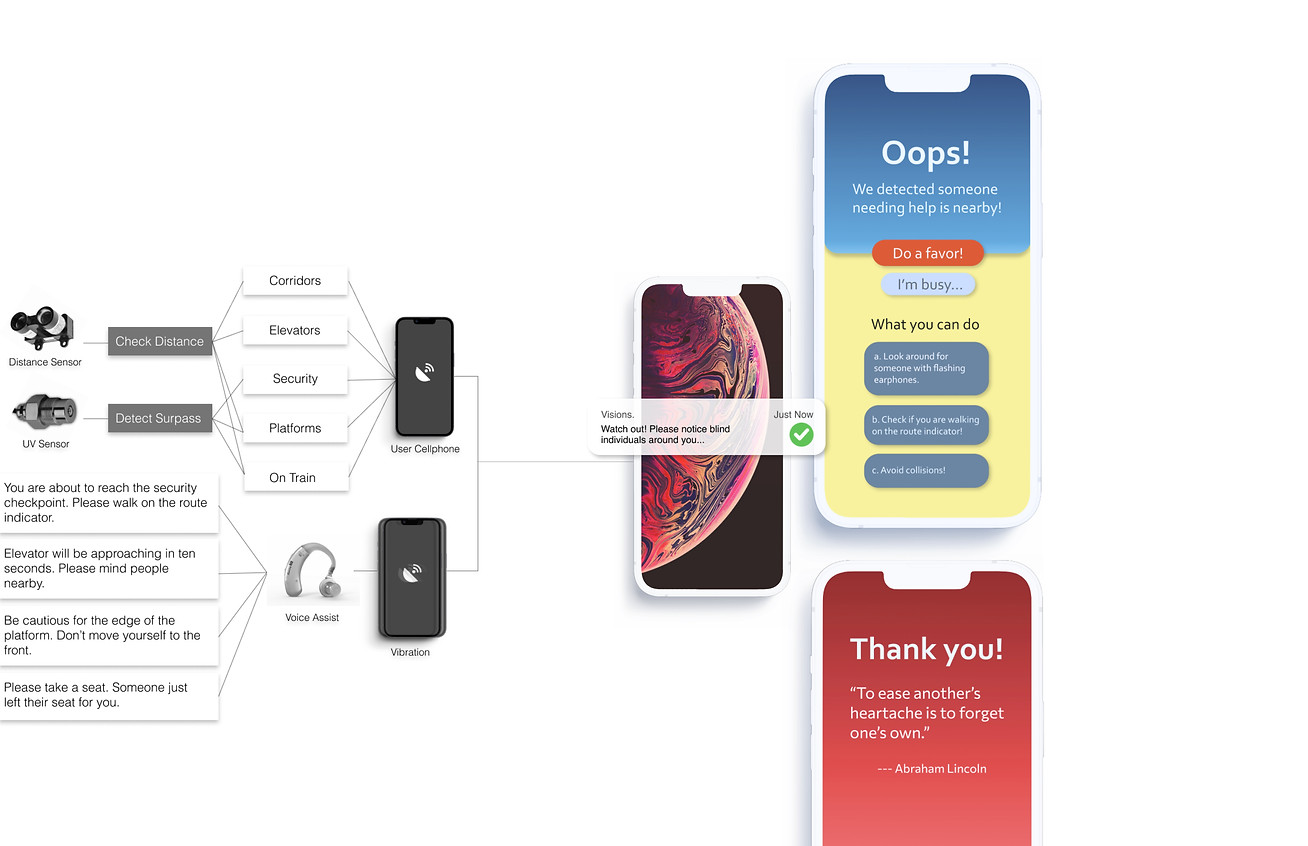
Visions
IoT Accessibility Design for NY Subway
Project @ Carnegie Mellon HCI Institute
Collaborated with Alicia Ng and Pat Vaidos.
Visions is an accessible IoT solution for visually impaired group in New York Subway. This system includes multiple devices, including earphones, cellphone radars, sensors, and distance detectors. Further usability is based on a cellphone application with voice-interaction. Users with the application can easily sense the occurance of disabled group and provide help.

Question: What's wrong with New York Subway?
14.7%
of people in New York City Area Suffers from visual impairments.
only 29%
of New York City Subway stations have accesible facilities for visual impaired groups
30.5%
of visual impaired group use New York Subway, compared to 55% of normal people
Then, what is visual impairment?
Visual Impairments refers to partial or total inability of visual perception. In the absence of treatment such as corrective eyewear, assistive devices, and medical treatment – visual impairment may cause the individual difficulties with normal daily tasks including reading and walking.


With visual impairment...
Riders experience difficulty buying tickets, due to lack of audio feedback.
Riders cannot identify different exits or elevator doors.
Riders cannot access the information on the information tabs
Riders cannot see the ground indicators on the platform
Problem Digestion
Determine the "Things in the Internet"
An effective IoT system is direct, precise and cost-friendly. By categorizing the available devices into controllers, sensors and actuators, we selected several “possible chains” of interaction and operation that could be used in our prototype. We decided to focus on the “controllers” and “sensors” since they have a lower cost and their interactions are easier to implement.
In order to gain insights towards the potential improvements and their possible solutions, the team and I decided to take a field research in Pittsburgh railway system as a reference NY subway. We discovered that the current implementation is profound for mobile disabled groups, while having no specific supports for riders with visual impairments.

Problem Digestion
Functional Analysis: Storyboarding
By observing stations in Pittsburgh, I conducted a full-process storyboard addressing several potential innovations from the chains we concluded. While brainstorming the possibilities of usable devices, we found that all of them would be benefited from connecting with the users’ cellphones. We decided to center on the cellphone to make an application that brings helpful notice to the blind people with a network that indicates them from other users’ ends.

Design Solution
A. Before the security
-Accessible touch on cellphone
-Earphones
-Location Detector

Design Solution
B. Into The Station
-Position Detector
-Earphones
-Accessible NFC
-Distance Sensor

Design Solution
C. Onto The Platform
-Distance Sensor
-Accessible Mobile Voice Assistant
-Earphones

Design Solution
D. On The Train
-Distance Sensor
-Cellphone Location Sensor
-Earphones

Design Solution
E. Off The Train
-Distance Sensor
-Accessible NFC
-Earphones

Design Solution
Mobile Application
By observing stations in Pittsburgh, I conducted a full-process storyboard addressing several potential innovations from the chains we concluded. While brainstorming the possibilities of usable devices, we found that all of them would be benefited from connecting with the users’ cellphones. We decided to center on the cellphone to make an application that brings helpful notice to the blind people with a network that indicates them from other users’ ends.
